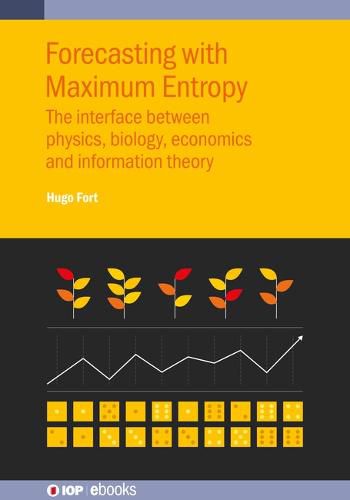Readings Newsletter
Become a Readings Member to make your shopping experience even easier.
Sign in or sign up for free!
You’re not far away from qualifying for FREE standard shipping within Australia
You’ve qualified for FREE standard shipping within Australia
The cart is loading…






This title is printed to order. This book may have been self-published. If so, we cannot guarantee the quality of the content. In the main most books will have gone through the editing process however some may not. We therefore suggest that you be aware of this before ordering this book. If in doubt check either the author or publisher’s details as we are unable to accept any returns unless they are faulty. Please contact us if you have any questions.
The main topic of this book is how information and its flux play a central role to forecast the dynamics of complex systems. Indeed, since its formulation by Shannon in the late 40’s, information theory has emerged as a key conceptual framework across different scientific areas such as biology, economics, finance and physics. In particular, the maximum entropy principle has proven to be a powerful general method to make the least biased inferences compatible with available data in a variety of realms for dealing with uncertainty within a decision analytic framework. These decision analysis problems are quite common and in fact are fundamental in operations research practice, in designing financial strategies or environmental management.
This book combines analytical methods for sensible stylized or minimal modelling to obtain exact closed formulas condensing basic relationships among the relevant variables, with numerical calculations, for more realistic descriptions of systems and empirical data. Always ensuring a high quality of presentation as well as content, the wide-ranging scope of the problems considered will not sacrifice the depth to which they are treated. It shows the usefulness of physics inspired modelling to solve practical problems in biology, economics and environmental science.
The purpose of this book is twofold. From one side, it aims at providing a unifying framework, based on information entropy and its maximization, to connect the phenomenology of different disciplines, like, biology, economics, and physics. On the other hand, the book provides a forecasting method for important practical problems in these disciplines. The common thread throughout the book is how the flux of information controls as well as it serves to predict the dynamics of complex systems. Information is emerging as a key concept across different scientific areas like biology, economics, finance and physics. It connects important problems of other disciplines to with well-studied phenomena within physics such as thermodynamics, statistical mechanics and complex systems to allow exploiting analogies to gain deeper insight into these problems, to identify novel questions and problems and to get powerful computation tools.
$9.00 standard shipping within Australia
FREE standard shipping within Australia for orders over $100.00
Express & International shipping calculated at checkout
Stock availability can be subject to change without notice. We recommend calling the shop or contacting our online team to check availability of low stock items. Please see our Shopping Online page for more details.
This title is printed to order. This book may have been self-published. If so, we cannot guarantee the quality of the content. In the main most books will have gone through the editing process however some may not. We therefore suggest that you be aware of this before ordering this book. If in doubt check either the author or publisher’s details as we are unable to accept any returns unless they are faulty. Please contact us if you have any questions.
The main topic of this book is how information and its flux play a central role to forecast the dynamics of complex systems. Indeed, since its formulation by Shannon in the late 40’s, information theory has emerged as a key conceptual framework across different scientific areas such as biology, economics, finance and physics. In particular, the maximum entropy principle has proven to be a powerful general method to make the least biased inferences compatible with available data in a variety of realms for dealing with uncertainty within a decision analytic framework. These decision analysis problems are quite common and in fact are fundamental in operations research practice, in designing financial strategies or environmental management.
This book combines analytical methods for sensible stylized or minimal modelling to obtain exact closed formulas condensing basic relationships among the relevant variables, with numerical calculations, for more realistic descriptions of systems and empirical data. Always ensuring a high quality of presentation as well as content, the wide-ranging scope of the problems considered will not sacrifice the depth to which they are treated. It shows the usefulness of physics inspired modelling to solve practical problems in biology, economics and environmental science.
The purpose of this book is twofold. From one side, it aims at providing a unifying framework, based on information entropy and its maximization, to connect the phenomenology of different disciplines, like, biology, economics, and physics. On the other hand, the book provides a forecasting method for important practical problems in these disciplines. The common thread throughout the book is how the flux of information controls as well as it serves to predict the dynamics of complex systems. Information is emerging as a key concept across different scientific areas like biology, economics, finance and physics. It connects important problems of other disciplines to with well-studied phenomena within physics such as thermodynamics, statistical mechanics and complex systems to allow exploiting analogies to gain deeper insight into these problems, to identify novel questions and problems and to get powerful computation tools.